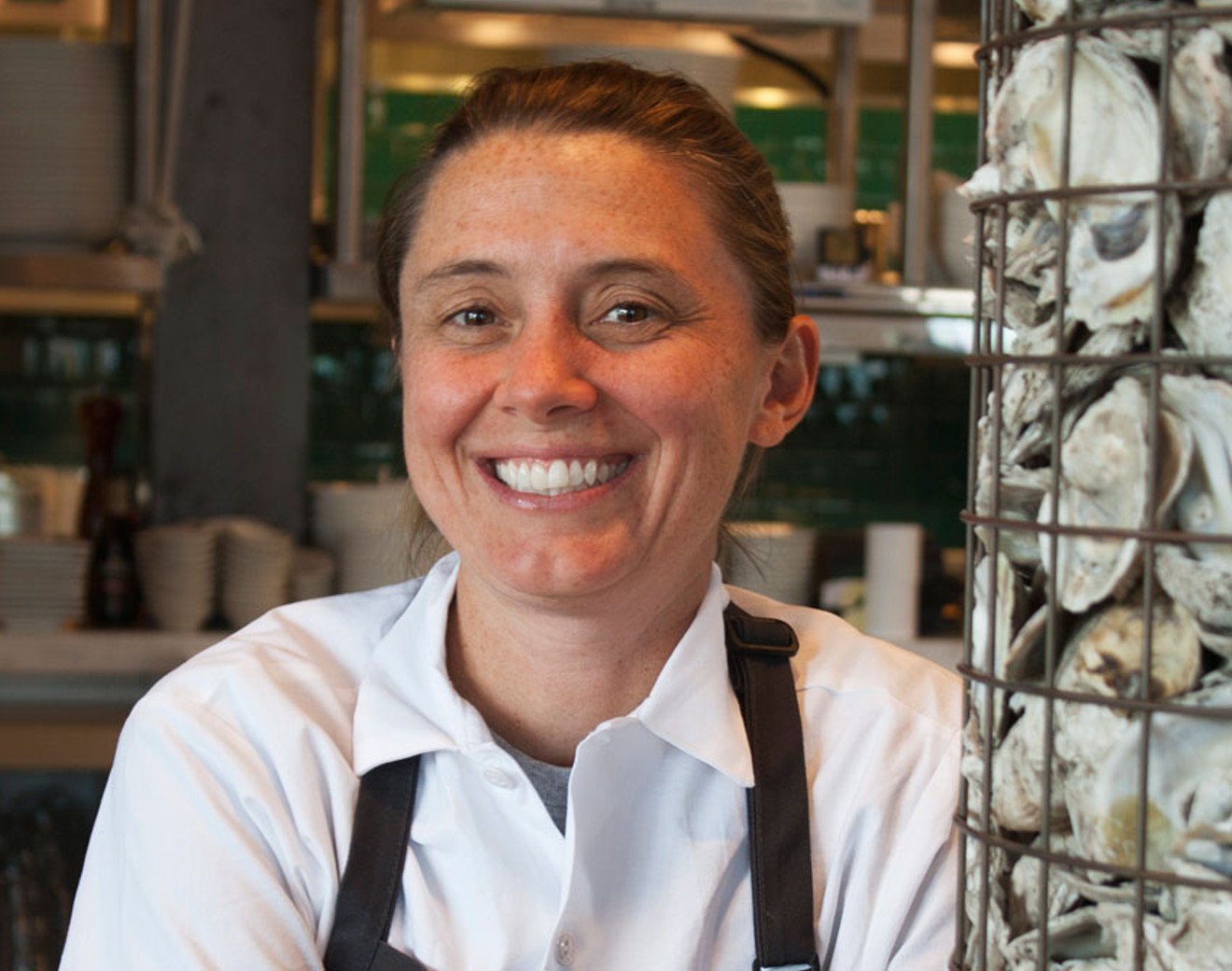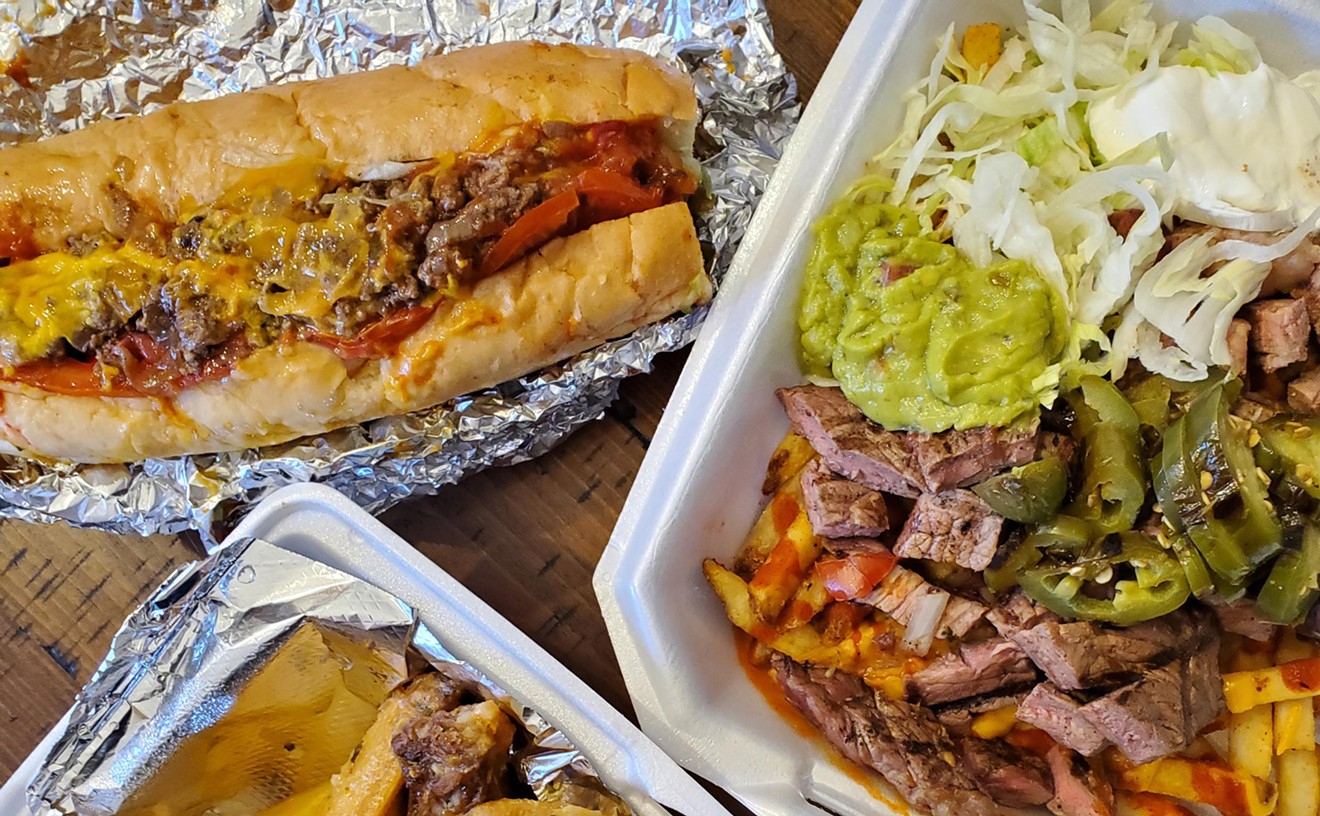When Sheila Lucero started working at the Jax in LoDo two decades ago, it was one of the few fish houses in town. The occasionally raucous corner restaurant quickly became popular for its oyster happy hour, which spilled out onto the patio during warm months. Thanks to Lucero, the restaurant was also a leader in sustainable seafood in Denver, even if it didn’t always trumpet its sourcing publicly. Lucero eventually came to oversee all five Jax Fish Houses, which are all distinct and tailored to the demographics of the neighborhoods in which they reside. In this interview, she talks about her experiences with responsible sourcing, why she uses bycatch (and what it is), and the proper way to eat an oyster.
Westword: You’ve been a big proponent of sustainable seafood via Jax, which has earned you national recognition. Could you talk a bit about those experiences?
Sheila Lucero: We’ve always sourced really mindfully; sustainability has always been a focus. We didn’t get on a soapbox, but it’s been the course we’ve taken. I’ve always used Monterey Bay [Aquarium Seafood Watch] as the guiding light in sourcing — I felt like they were the authority. One day, I reached out to them to get involved. They have this Blue Ribbon Task Force, which is a group of chefs, about 55 around the nation...and I went through the paces of getting a partnership with them. We were already doing a lot of the stuff, so it was not that difficult — but they audit us and check out our menus. We created this partnership for all five Jax restaurants. [Monterey Bay] gets us together once or twice a year — I’m going to South Carolina in November — and that helps us wrap our heads around what we can do in our communities or with each other to spread the word about fisheries and management of them.
Earlier this year, I went to the James Beard Foundation’s Boot Camp [for Policy and Change]. They want to empower us to be advocates in what we’re passionate about, and they talked a lot to us about how our time is valuable. Where do you want to spend time? What do you want to be a champion of? For me, seafood for sure, but there are tons of roads to go down. This was about doing things that are impactful to what we’re passionate about.
So what can chefs do to make sure they’re protecting the oceans and fisheries?
The biggest thing for us as chefs in the seafood world is focusing on what we’re purchasing. Supporting U.S. fisheries is huge. We have the best fishery management in the world. Where we can, we talk about that, share with other chefs and open their eyes to those products. We’re so lucky in having really inquisitive and intelligent guests. It’s cool to share those stories about the family we’re supporting in Alaska, for instance; people want to hear that and about the efforts we put forth trying to get [products] here.
Are there any species you avoid?
Anything in the “avoid” category [on the Monterey Bay guide]. I really try not to use bluefin tuna. Chilean sea bass was in a bad place and it’s made a recovery, but I’m not comfortable putting it on the menu. It takes time to educate people. We overfished it, so now everyone is scared of it, but it’s in recovery. We’re trying to focus on things that are recognizable, but we’re fortunate that we’ve been around and people trust us. We can introduce species that are not of the norm. They trust us on things that are invasive or bycatch.
Can you explain what bycatch is?
When these guys go out, they’re going out to catch tuna or mahi-mahi, but depending on how they’re fishing, they catch several species. Even if you throw a line out, you don’t know what you’re going to catch. If you have a net, you catch several species. So we want to make sure those get utilized and not just thrown away or trashed. It’s a really cool success story for us. Fifteen years ago, we started bringing in escolar, which was not totally heard of, so we were getting it at a really good price. That’s a bycatch, and people started to like it. Now there’s all kinds of stuff out there. We use lionfish, which is taking over the coast of Florida. I don’t think we’re able to create an entire menu of this stuff, because people really want the halibut, tuna, salmon, shrimp — things that are commonplace in America. And most of those species are in good condition, so we respect them by serving them in the seasons. But by having that, we can supplement with the species that aren’t as familiar.
How have diners’ attitudes toward seafood changed?
We used a ton of tuna in the beginning, and we would break down the tuna into really beautiful pieces for people who wanted raw or rare; the more sinewy pieces would be medium, mid-plus, mid-well. We sold mostly medium to medium-well. Now, everyone wants rare or raw. They’re more trusting. More well-traveled. We can push a little bit. We’re not so meat-and-potatoes-focused anymore.
Jax is famous for oysters. Can you give us a primer?
The great things about oysters is that they’re a keystone species, so they’re the most sustainable thing in seafood to me. They’re farmed and cultivated, and they’re not fast growers — so they’re definitely an investment if you want to be an oyster farmer — but they’re pretty resilient. They taste like where they’re from: They’re filtering fifty gallons of water a day, so whatever they’re filtering is what they taste like. That’s why you can have a species in one area of a river and the same species close to the ocean, and the latter tastes more like the ocean. I love blowing peoples’ minds about flavor profiles and techniques in growing. We’re fortunate to have an oyster farm in Virginia that we’ve partnered with. We can go out, see exactly where our oysters are grown and what farmers do to make the oysters the shape they are; there’s a little manipulation there. [Eaters should] be open to trying them side by side and really think about eating them; they’re all so different. People always ask me: What’s the right way to eat an oyster? There’s no wrong way. I eat them with cocktail sauces, with mignonette, naked, cooked. They’re delicious, and they’re good for you.
You’ve had ample opportunity to travel as part of this job. How has that impacted your cooking?
Yeah, that’s a really cool part of my job — I love to eat, and I’m open to eating anything, so I like sponging up what a culture or city has to offer. Since I’ve been cooking seafood, I’ve always been passionate and attracted to Japanese-style food. I’m a big sushi person. I love that it’s really clean and not overworked. I got to go to Japan last year, and that was mind-blowing to me. It really opened up my eyes to a lot of seafood, styles of cooking, that basic respect of the product, and a minimalistic kind of view — you don’t have to manipulate it. That really resonated with me. I’ve always liked the Pacific Northwest, especially Seattle. I love the oysters from that region, the salmon, the Dungeness crab. There’s some Asian influence there, as well, and a lot of the foraging that goes on up there is great to utilize. It’s my go-to region when I’m thinking creatively about food. I also love New Orleans — I’ve done some chef trips there, and the food is embedded in that culture. Even people who don’t cook for a living just love food.
How has your style evolved over your years here?
I’m more collaborative now. I plant seeds with the chef, but I want them to own it. We start bouncing things back and forth, and what we come up with is totally different from what I would come up with on my own, which is really cool. We’re five chefs who all think differently. The well runs dry sometimes and I start reusing ideas, so being able to have five brains — that’s been really cool. I think being a seafood chef, I’ve learned I don’t have to totally manipulate seafood, especially when it’s of really great quality.
What do you cook at home?
Five years ago, I would have said nothing. My husband coaches soccer, and when people ask what his wife does and he says his wife’s a chef, they say, “Wow, you must eat so well!” And he’s like, “No, she doesn’t cook.” But now I’m not as tied to the stoves here as much. I’m not exhausted when I get home, and sometimes I get home at the time of dinner. So we switch it up all the time. My husband likes to grill, so we tag-team on that. I like making pasta at home. It’s really cathartic.
What’s always in your fridge or pantry?
One whole side of my fridge is hot sauce. All kinds. My go-to is sriracha, but I’ve been ramping up the heat and have some with habanero. Fish sauce. Different styles of mustard, cool condiments and things you can make sauces with: barrel-aged soy sauce, barrel-aged fish sauce, things you pick up while traveling.
Favorite late-night snack?
Pizza at Cart-Driver. Ramen — sometimes quick, easy ramen that you add stuff to at home. Grilled cheese sandwiches.
How about a shift drink?
Double tall vodka soda. [She laughs.] I love Negronis, but for a shift drink, when I need something, it’s a vodka soda. If I’m making drinks, it’s silver coin margaritas or Negronis all night long.
Any menu items we should look out for right now?
We just had a fall menu change at LoDo, so it’s super-seasonal and fantastic. The scallops dish is my favorite. Anything coming out of the steamer pots: It’s a show, you get all the aromatics, and it’s so fun.
Jax Fish House
Five Front Range locations, find out more at jaxfishhouse.com
[
{
"name": "Air - MediumRectangle - Inline Content - Mobile Display Size",
"component": "12017618",
"insertPoint": "2",
"requiredCountToDisplay": "2"
},{
"name": "Editor Picks",
"component": "17242653",
"insertPoint": "4",
"requiredCountToDisplay": "1"
},{
"name": "Inline Links",
"component": "18838239",
"insertPoint": "8th",
"startingPoint": 8,
"requiredCountToDisplay": "7",
"maxInsertions": 25
},{
"name": "Air - MediumRectangle - Combo - Inline Content",
"component": "17261320",
"insertPoint": "8th",
"startingPoint": 8,
"requiredCountToDisplay": "7",
"maxInsertions": 25
},{
"name": "Inline Links",
"component": "18838239",
"insertPoint": "8th",
"startingPoint": 12,
"requiredCountToDisplay": "11",
"maxInsertions": 25
},{
"name": "Air - Leaderboard Tower - Combo - Inline Content",
"component": "17261321",
"insertPoint": "8th",
"startingPoint": 12,
"requiredCountToDisplay": "11",
"maxInsertions": 25
}
]














